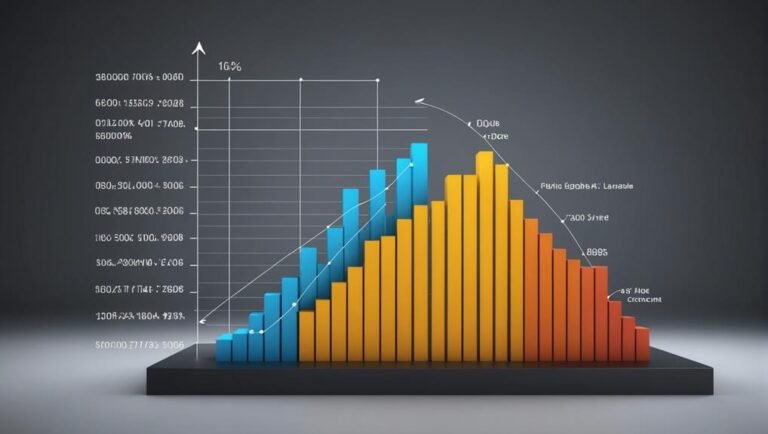What Is an Amortization Schedule? How to Calculate With Formula
An amortization schedule acts as an essential financial roadmap for loan repayment, shedding light on how each installment chips away at both the interest and principal amounts. The process of calculating this schedule involves a specific formula that dissects payments into their interest and principal components, offering borrowers a clear view of their debt reduction journey. But what nuances lie within this formula, and how can borrowers leverage this insight to optimize their repayment strategy? Understanding the intricacies of amortization schedules goes beyond mere calculations; it reveals a strategic approach to debt management that savvy borrowers can harness to their advantage.
Key Takeaways
- An amortization schedule details loan repayment over time.
- It breaks down payments into interest and principal amounts.
- Calculated using the amortization formula for each payment.
- Helps track payment allocation towards reducing the balance.
- Essential for understanding and managing loan repayment effectively.
Understanding Amortization Schedules
Amortization schedules serve as important tools in financial management, providing a detailed breakdown of loan repayment structures over time. These schedules offer a thorough payment breakdown, delineating the allocation of each payment towards interest accumulation and principal repayment.
Interest accumulation is a key component as it highlights the cost of borrowing over the loan term. By breaking down payment components into interest and principal, these schedules offer clarity on how each payment contributes to reducing the outstanding balance.
Understanding these schedules is essential for borrowers to track the timing and amounts of payments accurately. This analytical approach enables individuals to strategize their finances effectively and make informed decisions regarding loan repayment.
Importance of Loan Repayment Schedules
Loan repayment schedules play an essential role in financial planning and management by providing a structured outline of payment obligations over the duration of a loan. These schedules are vital components in developing effective repayment strategies that align with an individual's or a business's financial goals.
By outlining the specific amounts due at different points in time, loan repayment schedules facilitate budgeting and cash flow management. They also help borrowers understand how much of each payment goes towards interest versus principal, aiding in long-term financial planning.
Effective utilization of loan repayment schedules can assist in optimizing repayment strategies, ensuring timely payments, and potentially reducing overall interest costs, thereby contributing to improved financial health.
Key Components of Amortization Calculation
Understanding the breakdown of key components in amortization calculations enhances financial comprehension and strategic planning for loan repayment. Calculating interest is a fundamental part of amortization, where each payment comprises both interest and principal components.
Payment breakdowns are essential in an amortization schedule, delineating how much of each payment goes towards interest to compensate the lender for providing funds and how much is allocated to reduce the outstanding balance.
Benefits and Drawbacks of Amortization
Gradually reducing outstanding balances over time, amortized loans offer borrowers level payments for more effective budget management. This structure guarantees that payments remain consistent throughout the loan term, making it easier for borrowers to plan and manage their finances.
While the steady principal reduction is a significant benefit, there are drawbacks to take into account. In the early stages of an amortized loan, a larger portion of the payment goes towards interest rather than principal, resulting in limited equity buildup.
This slower equity accumulation can be seen as a disadvantage, especially for those looking to build equity quickly. Understanding the balance between level payments and equity buildup is essential when evaluating the suitability of an amortized loan.
Comparing Amortization and Depreciation
Comparing amortization and depreciation involves understanding the distinct accounting treatments and calculation methods used for intangible and tangible assets, respectively.
| Amortization | Depreciation | |
|---|---|---|
| Asset Type | Intangible assets | Tangible assets |
| Accounting Methods | Straight-line method | Various methods (e.g., declining balance, double-declining balance) |
| Asset Valuation | Directly credits a specific asset account | Uses a contra asset account |
Conclusion
In summary, understanding amortization schedules is essential for borrowers to track their loan repayment progress.
By calculating the periodic payment amount and breaking it down into interest and principal components, borrowers can visualize how their loan balance decreases over time.
Amortization schedules provide a clear roadmap for loan repayment, helping borrowers stay on track and manage their finances effectively.







